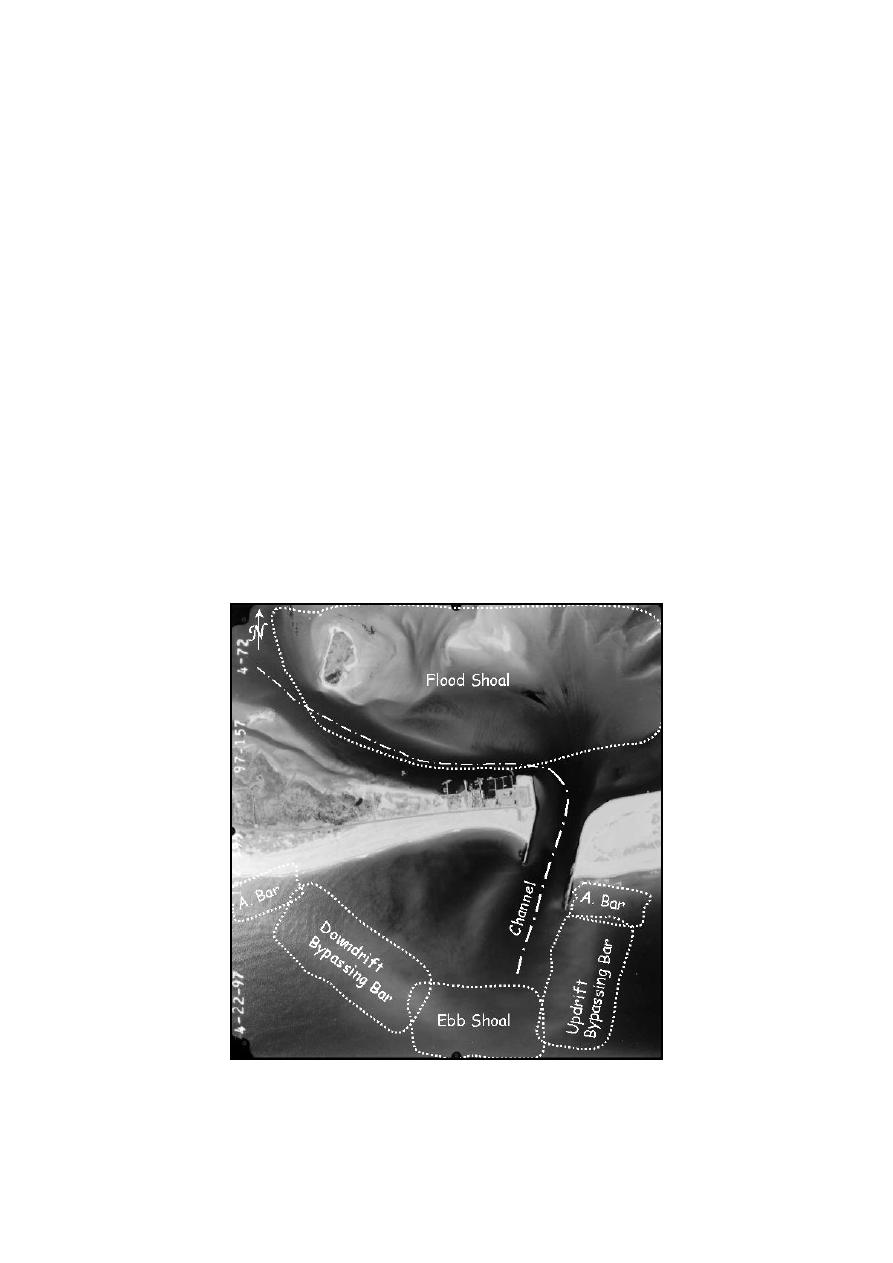
McKee 2003; Erickson et al. 2003). Such typically ephemeral inlets are not considered
here.
Jetties are constructed to stabilize the position of the inlet, confine the current, protect
the channel from sedimentation by longshore transport, and allow vessels to transit
through the wave-breaking zone under non-stormy conditions. It is now well known
that jetties and associated dredging operations to maintain the navigation channel will
alter the position of the shoreline, eroding or advancing the beach, depending on various
factors. These include the net and gross rates of longshore sediment transport, length of
the jetties, depth and width of the navigation channel, bypassing practice at the inlet, and
occurrence and strength of storms. An ebb shoal and flood shoal will form from
material that would otherwise be available to the beach, and more complex morphology
can develop (Fig 1), such as bypassing bars to the ebb shoal and attachment bars where
bypassing sediment leaves or returns to the beach on either side of the inlet (Kraus
2000). Navigable inlets with large tidal prisms form ebb shoals containing millions to
hundreds of millions of cubic meters of sediment. Because of the large change
anticipated with construction of a new inlet with its navigation channel and jetties,
modern design must account for both navigation reliability and future state of the
nearshore morphology, adjacent beaches, and bay morphology. Morphologic change
can occur over many years to centuries, and coastal response and engineering
responsibility may extend far up drift and down drift of the inlet.
Fig. 1. Morphologic features, Shinnecock Inlet, New York
2




 Previous Page
Previous Page
